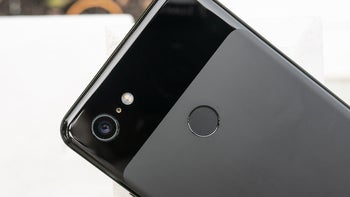The supposed reason why Pixel 5 will retain Pixel 3's sensor

The upcoming Google Pixel 5 will likely feature a 12.2MP primary camera and an ultra-wide sensor instead of Pixel 4's telephoto camera. The company will apparently use the Sony IMX363 for the main camera, and it's the same unit that we saw on the Pixel 3, Pixel 4, and Pixel 4a. If you are wondering why Google isn't upgrading the sensor, the recent episode of The Vergecast might have some answers.
The Verge's editor-in-chief Nilay Patel recently had a conversation with Marc Levoy, the man behind Pixel's computational photography. He left the company back in May and now works for Adobe.
Levoy believes that mobile sensors have come a long way. He says recent improvements are nothing ground breaking, and are coming with diminishing returns.
As 9to5Google reports, Levoy thinks hardware and software go hand in hand, and merely adding more lenses and sensors is not useful on its own. He has given the example of the Super Res Zoom technology which gave a boost to Pixel 4's telephoto lens.
Pixel's main claim to fame is its photography prowess and now that Levoy is no longer a part of the company, many wonder if the upcoming phones will still deliver in this department. He said he has given some suggestions to the company, presumably for the Pixel 5, but he can't guarantee if Google is going to incorporate them.
The Verge's editor-in-chief Nilay Patel recently had a conversation with Marc Levoy, the man behind Pixel's computational photography. He left the company back in May and now works for Adobe.
In his own words:
Because of the diminishing returns due to the laws of physics, I don’t know that the basic sensors are that much of a draw. I don’t know that going to 96 megapixels is a good idea. The signal-to-noise ratio will depend on the size of the sensor. It is more or less a question of how big a sensor can you stuff into the form factor of a mobile camera. Before the iPhone, smartphones were thicker. If we could go back to that, if that would be acceptable, then we could put larger sensors in there. Nokia experimented with that, wasn’t commercially successful.
Ideally, pixels should be large as this allows them to capture more light than smaller pixels. For a high-resolution camera, a lot of pixels are needed, and vendors shrink pixel size to increase resolution without increasing sensor size, and this increases noise.
As I said, the signal to noise ratio is basically a matter of the total sensor size. If you want to put 96 megapixels and you can’t squeeze a larger sensor physically into the form factor of the phone, then you have to make the pixels smaller, and you end up close to the diffraction limit and those pixels end up worse. They are noisier. It’s just not clear how much advantage you get.
To address this issue, some smartphone vendors use the pixel binning technique whereby data from multiple pixels is combined into one to reduce noise.
Levoy isn't convinced that this method makes a significant difference. He has hinted that Google will use a new sensor when Sony or some other company manufacturers a unit that has lower read noise than current offerings as this would improve low light photography.
Levoy seemingly gave his input regarding Pixel 5 camera's too
As 9to5Google reports, Levoy thinks hardware and software go hand in hand, and merely adding more lenses and sensors is not useful on its own. He has given the example of the Super Res Zoom technology which gave a boost to Pixel 4's telephoto lens.
I gave them advice. Whether they listened to it or not would be another question.
The phone will reportedly be unveiled on September 25 and shipments will likely begin by mid-October. The phone will probably be powered by the Snapdragon 765G and it's expected to cost between $649 and $699 in the US.
It will be accompanied by the Pixel 4a (5G) which will retail for $499.










Things that are NOT allowed: